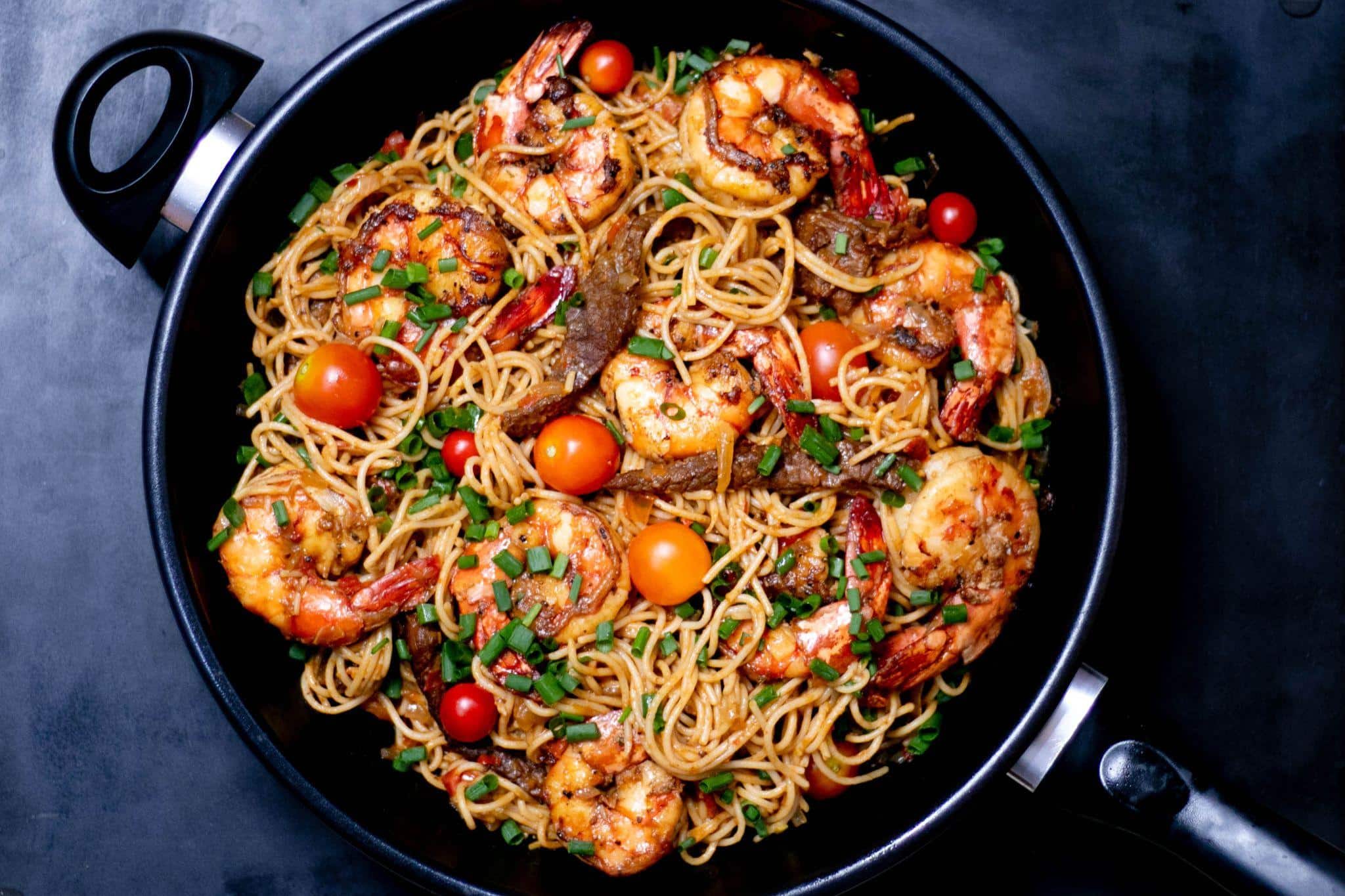Creative Twists On Classic Pasta Recipes: Reinventing The Italian Classics
There’s a certain allure to Italian cuisine that transcends time and place.
At the heart of this culinary tradition lies pasta, a versatile staple that has comforted generations.
Yet, while the classics have earned their revered place on dinner tables worldwide, innovation is the spice of life.
Reinventing these Italian classics allows for a refreshing take on old favorites while preserving the spirit of the original dish.
Rediscovering Pastina: The Smallest Pasta With Big Potential
Pastina, the diminutive form of ‘pasta’, refers to the tiniest pasta shapes traditionally served to infants and toddlers.
But who said adults couldn’t revel in its delicate texture and versatile nature?
Cheesy Italian Pastina
Cheesy Italian pastina is like a comforting embrace from an Italian grandmother. Imagine a pot of tender pastina, enveloped in a luscious blend of cheeses, all melted to perfection.
This is a dish where cheese takes the center stage, with the pastina providing a delightful texture that complements the creaminess.
It’s not merely about slapping some cheese on pastina, but about choosing cheeses that melt well and carry robust flavors like mozzarella, fontina, or even a hint of sharp pecorino.
Complement this with some fresh herbs, and you’ve reimagined a childhood staple as a gourmet dish.
Pastina In Broth With Fresh Vegetables
Let’s embrace the delicate nature of pastina. Using a light vegetable broth as a base, simmering finely chopped vegetables like carrots, zucchini, and spinach creates a heart-warming, healthy dish.
This version respects the simplicity that pastina embodies while infusing freshness with each bite.
Seafood Pastina
Inspired by the Italian coastline, this twist brings the sea’s bounty to the plate.
Gentle flavors of shrimp, mussels, or clams combined with garlic, cherry tomatoes, and a touch of white wine redefine pastina’s character.
It’s a dish that brings together land and sea, creating a symphony of flavors.
Importance Of Kitchen Ambience: The Invisible Ingredient
While ingredients and cooking techniques are tangible aspects of cooking, the ambience in which we cook plays an equally vital role.
It can significantly influence the outcome of a dish, as it affects the chef’s mood, efficiency, and creativity.
The Role Of Lighting In The Kitchen
Lighting isn’t just about seeing what you’re doing; it sets the tone for your culinary journey.
A well-lit kitchen can make a huge difference. For tasks like chopping and reading recipes, a bright, focused light is essential.
On the other hand, for a relaxed dinner preparation, a warmer and dimmer light can set a calming atmosphere. Investing in adjustable lighting fixtures can be an invaluable addition to your kitchen.
Pendant lights above counters or under-cabinet lights can merge functionality with style, ensuring you’re in the right mood to give your dish the love it deserves.
Organization And Flow
A clutter-free, organized kitchen isn’t just about aesthetics; it’s about efficiency.
Knowing where every tool and ingredient is allows for a smoother cooking process. This also means less stress and more enjoyment, leading to better dishes.
Consider reorganizing your kitchen space periodically, keeping in mind the flow of your cooking routine.
Music: The Rhythm Of Cooking
Ever noticed how a particular song can lift your spirits? Music has a profound impact on our emotions.
Playing some Italian classics or your favorite tunes in the background can add rhythm to your cooking, making the process more therapeutic and enjoyable.
Embracing Alternative Ingredients: A New World Of Flavors
Traditional pasta recipes have stood the test of time, but introducing new ingredients can offer an exciting culinary adventure.
Whole Grain And Alternative Flours
Swapping regular pasta for whole grain varieties introduces a richer, nuttier flavor profile.
Beyond whole wheat, there are flours like chickpea, quinoa, and lentil which make for intriguing pasta bases, each bringing its unique taste and texture.
Vegetable Infusions
Vegetables like spinach, beetroot, and carrot can be incorporated into the pasta dough itself, not only adding color but also subtle flavors.
These versions can be paired with lighter sauces to let their natural taste shine through.
Global Fusion Techniques
While keeping the essence of the Italian dish, incorporate techniques or flavors from other cuisines.
Imagine a classic spaghetti tossed in a mildly spicy Asian-inspired sauce or ravioli filled with flavors reminiscent of the Middle East.
The possibilities are endless when worlds collide in a pasta bowl.
Incorporating Seasonal Ingredients: A Symphony Of Freshness
One of the quintessential elements of Italian cooking is its reliance on fresh, quality ingredients.
In many parts of Italy, it’s customary to visit local markets and choose produce that’s in season.
Such ingredients not only pack more flavor but are also nutritionally dense.
Incorporating them into your pasta recipes can introduce a variety of colors, textures, and tastes, making each dish stand out.
Summer’s Bounty: Tomatoes And Basil
As summer peaks, tomatoes ripen to their juiciest self, and basil flourishes in gardens. These two, when paired, create a harmony of flavors.
Whether you’re making a fresh tomato sauce or simply tossing cherry tomatoes and basil with olive oil over warm pasta, this combination celebrates the essence of summer.
Autumn Embrace: Pumpkin And Sage
Autumn brings with it a rustic palette. Pumpkins and squashes dominate this season, offering a creamy texture and a slightly sweet taste.
Combining them with sage, which has a subtle peppery flavor, creates a pasta dish that’s both hearty and warming. Think of pumpkin-filled ravioli drizzled with sage-infused butter.
Winter Warmers: Spinach And Roasted Garlic
Winter calls for ingredients that provide warmth and depth. Spinach, with its earthy tones, pairs beautifully with the mellow sweetness of roasted garlic.
Whether in a lasagna or a simple spaghetti toss-up, this duo can make winter meals comforting and delicious.
Final Considerations
In conclusion, while the classics will always hold a special place in our hearts, there’s immense joy in experimenting and giving these dishes a personal touch.
Whether through ingredients, techniques, or even the ambience in which we cook, every alteration can lead to a delightful culinary surprise.







